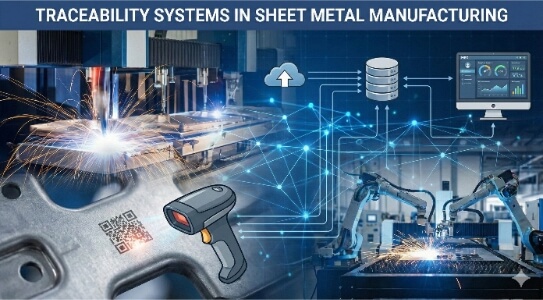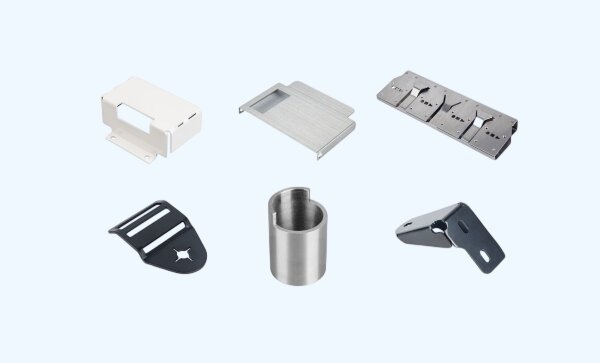Aluminium is licht, sterk en roestbestendig. Ruw aluminium geeft echter niet altijd het nette uiterlijk dat mensen verwachten. Veel ontwerpers, ingenieurs en fabrikanten willen een oppervlak dat er gepolijst uitziet maar toch goed werkt. Geborsteld aluminium voldoet aan die behoefte. Het creëert een moderne stijl zonder aan sterkte of duurzaamheid in te boeten.
Geborsteld aluminium wordt in veel producten gebruikt, zoals laptops, keukengereedschap en uithangborden. Het oppervlak ziet er glad en modern uit terwijl het sterk en betrouwbaar is. Wil je weten hoe deze afwerking wordt gemaakt en waar het wordt gebruikt?
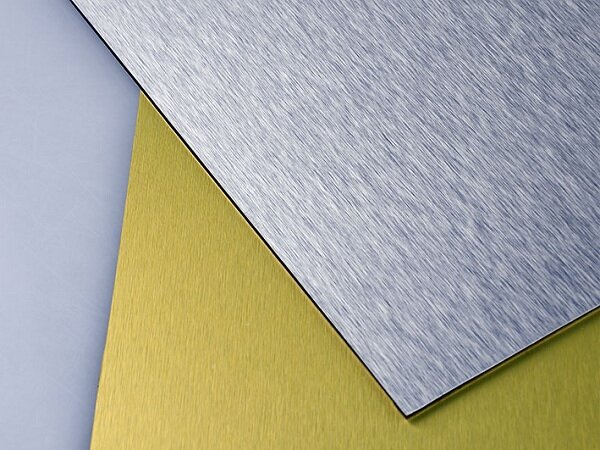
Wat is geborsteld aluminium?
Geborsteld aluminium is mechanisch gepolijst om een doffe, consistente korrel te creëren. Deze korrel loopt in één richting, waardoor het oppervlak mat wordt. Het borstelen verwijdert kleine onvolkomenheden en geeft het metaal een strakke, moderne look.
Het proces verandert de sterkte of de kerneigenschappen van het aluminium niet. Het verandert alleen het oppervlak. Dat betekent dat het metaal zijn natuurlijke duurzaamheid behoudt en er decoratief uitziet. Hierdoor wordt geborsteld aluminium veel gebruikt in elektronica, apparaten, autopanelen en vele andere producten.
De afwerking verandert ook hoe het oppervlak eruitziet en presteert. Een geborstelde textuur kan krassen beter verbergen dan een glanzend poetsmiddel. Het vermindert schittering en maakt vingerafdrukken minder opvallend. Deze kwaliteiten maken het praktisch voor producten die mensen vaak aanraken, of het nu gaat om alledaagse gebruiksvoorwerpen of industriële omgevingen voor intensief gebruik.
Hoe wordt geborsteld aluminium gemaakt?
Geborsteld aluminium krijgt zijn unieke look door een reeks oppervlaktebehandelingen die een fijne, gerichte korrel creëren. Het proces wordt zorgvuldig gecontroleerd om een schone en consistente afwerking te garanderen. Hier zie je hoe het stap voor stap gebeurt.
Stap 1: Oppervlaktereiniging en voorbereiding
Eerst moet het aluminium oppervlak gereinigd worden. Ruw aluminium bevat meestal olie, stof of oxidatie die de uiteindelijke afwerking kunnen beïnvloeden. Om deze te verwijderen wordt het materiaal gewassen met een ontvetter of een milde alkalische reiniger. Daarna wordt het afgespoeld en gedroogd.
Soms wordt er licht geschuurd of chemisch geëtst om het borstelproces soepeler te laten verlopen. Dit voorbereidende werk zorgt ervoor dat het gereedschap niet verstopt raakt en dat het nerfpatroon gelijkmatig blijft zitten. Als er deuken of krassen zijn, worden die hersteld voordat het borstelen begint.
Stap 2: Het oppervlak borstelen
Vervolgens begint het eigenlijke borstelen. De methode hangt af van de hoeveelheid aluminium die verwerkt wordt en het gewenste uiterlijk.
- Handmatig poetsen: Arbeiders gebruiken schuursponzen of handgereedschap voor kleine batches of klussen op maat. Dit geeft meer controle, maar om een gladde, gelijkmatige afwerking te krijgen is vaardigheid nodig.
- Machinaal borstelen: Machines gebruiken schuurbanden of draadborstels voor grote series of preciezer werk. Deze gereedschappen bewegen recht met constante druk, waardoor het aluminium een schone, uniforme korrel krijgt.
Het type schuurmiddel dat wordt gebruikt heeft invloed op de textuur. Grove korrels geven een krachtige, diepe korrel, terwijl fijne korrels een zachtere, subtielere look geven. De keuze hangt af van de stijl en functie van het afgewerkte onderdeel.
Stap 3: Optionele afwerking
Sommige producten moeten na de eerste borstelbeurt extra worden afgewerkt. Dit kan een tweede ronde van fijn borstelen inhouden om lijnen glad te strijken of overlappingen te vervagen. Zachte pads worden soms gebruikt om randen te polijsten en overgebleven deeltjes op te ruimen.
Speciale ontwerpen, zoals kruispatronen, kunnen ook in dit stadium worden toegevoegd. Hierbij wordt het metaal in meer dan één richting geborsteld. Ze komen niet vaak voor, maar worden gebruikt voor specifieke ontwerpeffecten.
Stap 4: Beschermende coating (optioneel)
Zelfs na het borstelen kan aluminium nog reageren met lucht en vocht. Daarom worden veel onderdelen voorzien van een beschermlaag om het oppervlak fris te houden.
- Helder Anodiseren: Dit voegt een dunne, transparante oxidelaag toe die het aluminium beschermt zonder de korrel te verbergen.
- Poedercoating of verf: Deze voegen kleur en duurzaamheid toe. Als ze dun worden aangebracht, blijft de geborstelde textuur zichtbaar.
- Blanke lakken of afdichtmiddelen helpen vocht tegen te houden en kunnen het gevoel van het oppervlak veranderen door het een beetje glans te geven of het mat te houden.
Sommige voorwerpen hebben geen coating nodig, zeker niet als ze binnenshuis worden gebruikt. Maar voor alles dat onderhevig is aan slijtage, vocht of gebruik buitenshuis, helpt een coating het uiterlijk en de prestaties te behouden.
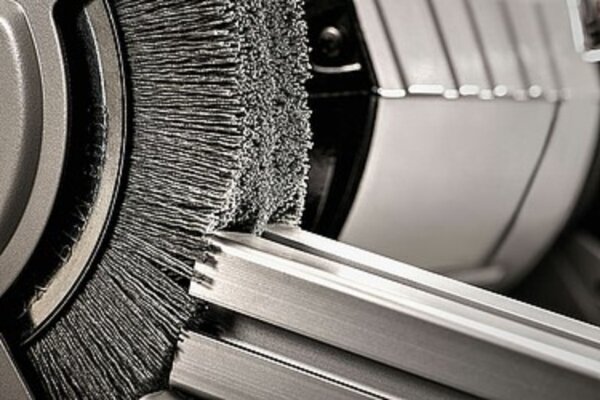
Soorten geborsteld aluminium afwerkingen
Geborsteld aluminium bestaat niet in één stijl. Het uiterlijk verandert op basis van de borstelrichting, het type schuurmiddel en de uiteindelijke oppervlaktedoelen. Elke afwerking geeft het metaal een andere textuur en uitstraling, waardoor het bruikbaar is voor praktische en decoratieve doeleinden.
Lineair geborsteld
De lineaire afwerking is de meest voorkomende stijl. Het toont lange, rechte lijnen die in één richting over het oppervlak lopen. Schuurbanden of staalborstels bewegen continu in één richting om deze afwerking te bereiken.
Het resultaat is schoon en consistent. Het wordt veel gebruikt in elektronica, keukenapparatuur en autobekleding. De lijnen helpen vingerafdrukken en krassen te verbergen terwijl ze een strakke, moderne look geven. Blanke coatings of anodiseren werken goed met deze afwerking omdat het nerfpatroon zichtbaar blijft door de beschermende laag.
Kruislamellenafwerking
De kruislingse afwerking creëert textuur door in twee of meer richtingen te borstelen. De kruisende lijnen vormen een rasterachtig patroon dat er gedetailleerder uitziet dan de eenvoudige lineaire stijl.
Deze afwerking wordt vaak gebruikt voor decoratieve panelen, borden of ontwerpen waar een uniek visueel effect nodig is. Het vergt meer tijd en zorg, waardoor het minder gebruikelijk is bij grote productieseries. Afhankelijk van de borstelhoek en -druk kan het patroon variëren van fijne rasters tot krachtige, brede streken.
Satijnen en matte afwerkingen
Bij satijnen en matte afwerkingen ligt de nadruk meer op een zachter oppervlak met weinig glans dan op zichtbare lijnen. Ze worden gemaakt met fijne schuurmiddelen of polijstpads die de textuur gladder maken en de glans verminderen.
Een satijnen afwerking voelt zijdezacht aan met een zachte glans, waardoor deze populair is voor interieurbeslag, kozijnen en bedieningspanelen. Een matte afwerking verwijdert bijna alle reflectie en laat een zachte, vlakke look achter. Dit maakt het ideaal voor producten die een rustig, niet-reflecterend oppervlak nodig hebben.
Voordelen van geborsteld aluminium
Bij geborsteld aluminium gaat het niet alleen om het uiterlijk. Het heeft ook praktische voordelen die het waardevol maken in verschillende industrieën. Deze voordelen verbeteren de productkwaliteit, verminderen het onderhoud en ondersteunen de prestaties op lange termijn.
Duurzaamheid en levensduur
Geborsteld aluminium behoudt zijn sterkte na afwerking. Het borstelproces verwijdert kleine foutjes maar verzwakt het metaal niet. In plaats daarvan laat het een stabiel, uniform oppervlak achter. De afwerking bladdert, schilfert of vervaagt niet gemakkelijk, zelfs niet bij regelmatig gebruik.
In combinatie met een beschermende coating wordt het nog veerkrachtiger. Het is bestand tegen slijtage, lichte schokken en contact met lucht of vocht, waardoor het geschikt is voor zowel binnen- als buitentoepassingen.
Weinig onderhoud
De geborstelde textuur maakt onderhoud eenvoudig. Kleine krasjes, deukjes en vlekken vallen minder op dan bij glanzende of gepolijste oppervlakken, en ook stof verdwijnt gemakkelijker.
Voor het schoonmaken is meestal alleen een vochtige doek nodig. Er zijn geen speciale gereedschappen of agressieve chemicaliën nodig. Dit onderhoudsgemak is vooral handig voor openbare ruimtes, displays in winkels en ruimtes waar veel mensen komen en waar het uiterlijk belangrijk is.
Flexibele ontwerpopties
Geborsteld aluminium past in veel stijlen, van moderne en industriële tot minimalistische ontwerpen. Het komt voor in elektronica, meubels, bewegwijzering, keukenapparatuur en bouwpanelen.
Het past zich ook goed aan aan maatwerk. Het metaal kan worden gesneden, gebogen, gestempeldof in combinatie met glas en kunststof. De afwerking voegt een visuele aantrekkingskracht toe en ondersteunt tegelijkertijd de praktische prestaties van verschillende producten.
Weerstand tegen krassen en vingerafdrukken
De gerichte korrel verspreidt het licht over het oppervlak, waardoor vingerafdrukken en kleine krasjes minder opvallen. Dit is een groot voordeel voor voorwerpen die mensen vaak aanraken, zoals panelen, handgrepen of schakelaars.
In tegenstelling tot spiegelgepolijste afwerkingen, die elk teken laten zien, blijft geborsteld aluminium er schoner uitzien tussen reinigingsbeurten door. Dit verlengt de visuele levensduur van producten, vooral op plaatsen zoals restaurants, ziekenhuizen en commerciële interieurs.
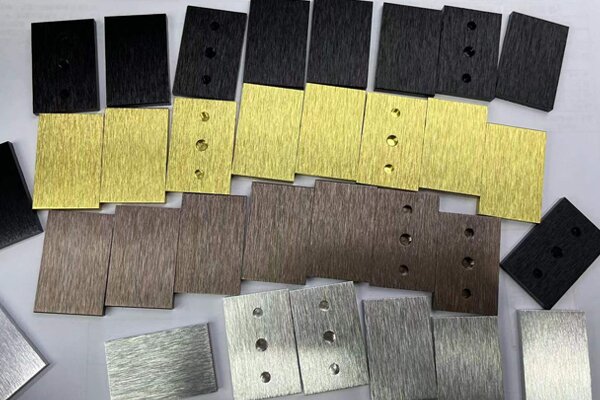
Nadelen van geborsteld aluminium
Geborsteld aluminium heeft veel sterke punten, maar het is niet zonder nadelen. Inzicht in deze beperkingen helpt om te beslissen wanneer deze afwerking zinvol is.
Beperkte kleurkeuzes
Geborsteld aluminium heeft een natuurlijke zilvergrijze tint. Dit is de klassieke look die mensen verwachten. Als er felle of levendige kleuren nodig zijn, is geborsteld aluminium minder flexibel. Het borstelproces maakt het moeilijker voor het oppervlak om sterke kleuren vast te houden.
Kleur kan nog steeds worden toegevoegd met anodiseren of verven. Deze opties zijn echter beperkter dan bij gepolijst of ongeborsteld aluminium. Dikke coatings kunnen ook de geborstelde lijnen bedekken, wat het visuele effect vermindert.
Risico's op oppervlakteschade
De textuur helpt lichte krassen te verbergen, maar diepe krassen zijn moeilijker te verbergen. Sneden die dwars op de nerf lopen, vallen scherp op. Harde stoten of wrijven tegen ruwe oppervlakken kunnen het nerfpatroon vervormen.
Het borstelproces verwijdert ook een dunne oppervlaktelaag van aluminium. Zonder de juiste bescherming kan het oppervlak sneller slijten bij herhaaldelijk reinigen, vooral met agressieve gereedschappen of chemicaliën.
Hogere kosten
Geborsteld aluminium kost meestal meer dan aluminium dat gewoon is afgewerkt. Het proces vereist extra stappen zoals reinigen, borstelen en coaten. Elke stap kost meer tijd en arbeid.
Het handhaven van een consistente nerfrichting vereist ook een strenge kwaliteitscontrole, wat de overhead bij grote productieruns verhoogt. Hoewel veel industrieën vinden dat de afwerking de prijs waard is, is het misschien niet de meest kosteneffectieve optie als uiterlijk geen belangrijke factor is.
Snelle vergelijking tussen geborsteld aluminium en andere afwerkingen
Deze tabel toont de belangrijkste verschillen tussen geborsteld aluminium en andere gangbare aluminium afwerkingen. Het helpt je snel hun uiterlijk, gevoel, beschermingsniveau en beste gebruiksscenario's te vergelijken.
| Eigenschap | Geborsteld aluminium | Gepolijst aluminium | Geanodiseerd aluminium | Gepoedercoat aluminium |
|---|---|---|---|---|
| Oppervlakteverschijning | Mat met nerflijnen | Glanzend, spiegelend | Glad of satijn, gekleurd | Effen kleur, uniforme afwerking |
| Textuur | Gerichte korrel | Glad | Gladde of lichte korrel | Glad of met structuur |
| Krasbestendigheid | Matig | Laag | Hoog | Hoog |
| Vingerafdrukbestendigheid | Goed | Slecht | Goed | Uitstekend |
| Corrosiebescherming | Laag (tenzij gecoat) | Laag | Hoog | Hoog |
| Kleuropties | Beperkt | Zeer beperkt | Matig | Breed assortiment |
| Onderhoudsbehoeften | Laag | Hoog | Laag | Zeer laag |
| Beste gebruikscases | Elektronica, panelen, interieurs | Sierlijsten, spiegels | Architectuur, marine, gereedschap | Onderdelen voor buiten, machines, armaturen |
Toepassingen van geborsteld aluminium
Geborsteld aluminium wordt in veel industrieën gebruikt omdat het een strak uiterlijk combineert met sterkte en praktisch nut. Hier zijn enkele van de meest voorkomende toepassingen.
Interieurontwerp
Geborsteld aluminium wordt gebruikt in sierlijsten, handgrepen, verlichtingsarmaturen en wandpanelen in huizen, kantoren en openbare ruimtes. Het matte oppervlak voegt een modern tintje toe zonder er overdreven glanzend uit te zien en het past goed bij materialen zoals glas, hout en steen.
Ontwerpers waarderen ook de neutrale kleur en het weinige onderhoud. De afwerking verbergt krassen en vingerafdrukken, waardoor het ideaal is voor plaatsen waar veel mensen komen, zoals liftpanelen, deurkozijnen en trapleuningen.
Consumentenelektronica
Geborsteld aluminium is populair voor laptops, smartphones, tablets en audioapparaten. De afwerking geeft deze producten een slanke, eersteklas uitstraling terwijl ze toch licht van gewicht blijven.
Het is ook bestand tegen vingerafdrukken en alledaagse slijtage, wat belangrijk is voor apparaten die constant worden gebruikt. Veel merken gebruiken het op covers, randen en bedieningspanelen om het uiterlijk en de duurzaamheid te verbeteren.
Automotive
Geborsteld aluminium wordt zowel binnen als buiten het voertuig gebruikt in de auto-industrie. Interieuronderdelen zoals dashboards, versnellingsknoppen, pedalen en deurgrepen hebben vaak deze afwerking om een verfijnde en technische stijl te creëren.
Aan de buitenkant komt het terug in sierdetails en badges. Automakers gebruiken het ook in prestatiegerichte modellen, waar gewichtsbesparing net zo belangrijk is als een stijlvol uiterlijk.
Bewegwijzering
Geborsteld aluminium wordt veel gebruikt voor borden voor binnen en buiten. Het oppervlak reflecteert licht, waardoor tekst en afbeeldingen duidelijk opvallen.
Het is ook roestbestendig, waardoor het geschikt is voor openbare gebouwen, kantoren en bewegwijzeringssystemen. Borden kunnen gesneden, gegraveerd of bedrukt worden terwijl de geborstelde textuur zichtbaar blijft, waardoor ze er professioneel en duurzaam uitzien.
Conclusie
Geborsteld aluminium heeft een uniforme, gerichte oppervlaktekorrel die ontstaat door mechanisch schuren. Het biedt een strak, modern uiterlijk met praktische voordelen zoals krasbestendigheid, weinig onderhoud en minder zichtbare vingerafdrukken. Dankzij de balans tussen uiterlijk en prestaties wordt het gebruikt in verschillende industrieën, van elektronica en interieurontwerp tot auto's en bewegwijzering.
Ben je op zoek naar hoogwaardige geborstelde aluminium onderdelen of aangepaste metalen afwerkingen? Neem contact op met ons team om oplossingen op maat van uw project te verkennen.
Hey, ik ben Kevin Lee

De afgelopen 10 jaar heb ik me verdiept in verschillende vormen van plaatbewerking en ik deel hier de coole inzichten die ik heb opgedaan in verschillende werkplaatsen.
Neem contact op

Kevin Lee
Ik heb meer dan tien jaar professionele ervaring in plaatbewerking, gespecialiseerd in lasersnijden, buigen, lassen en oppervlaktebehandelingstechnieken. Als technisch directeur bij Shengen zet ik me in om complexe productie-uitdagingen op te lossen en innovatie en kwaliteit in elk project te stimuleren.

